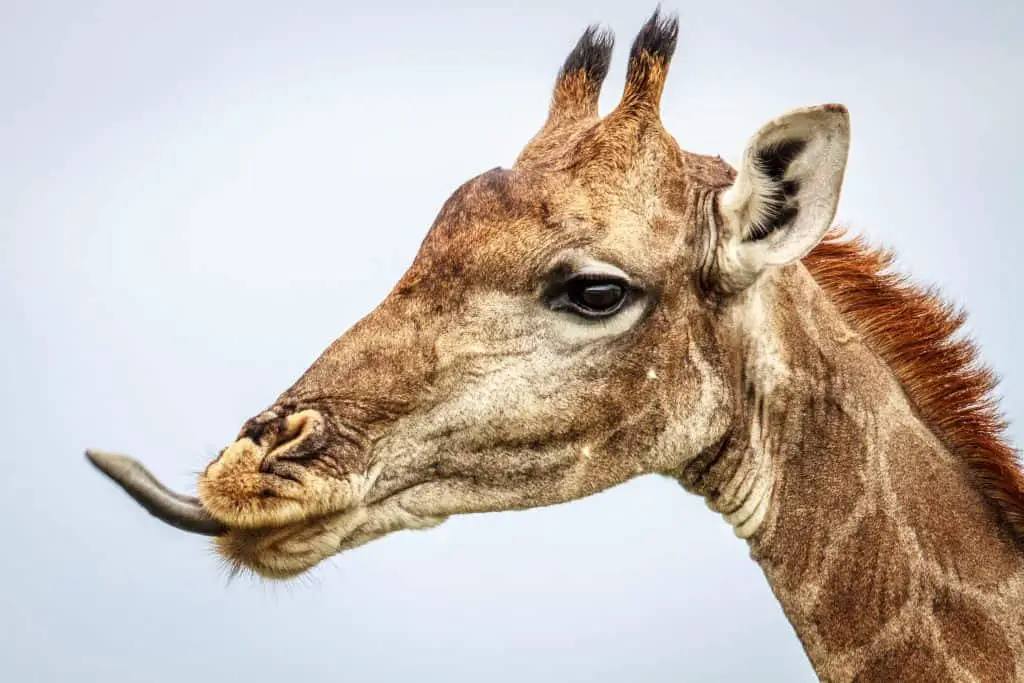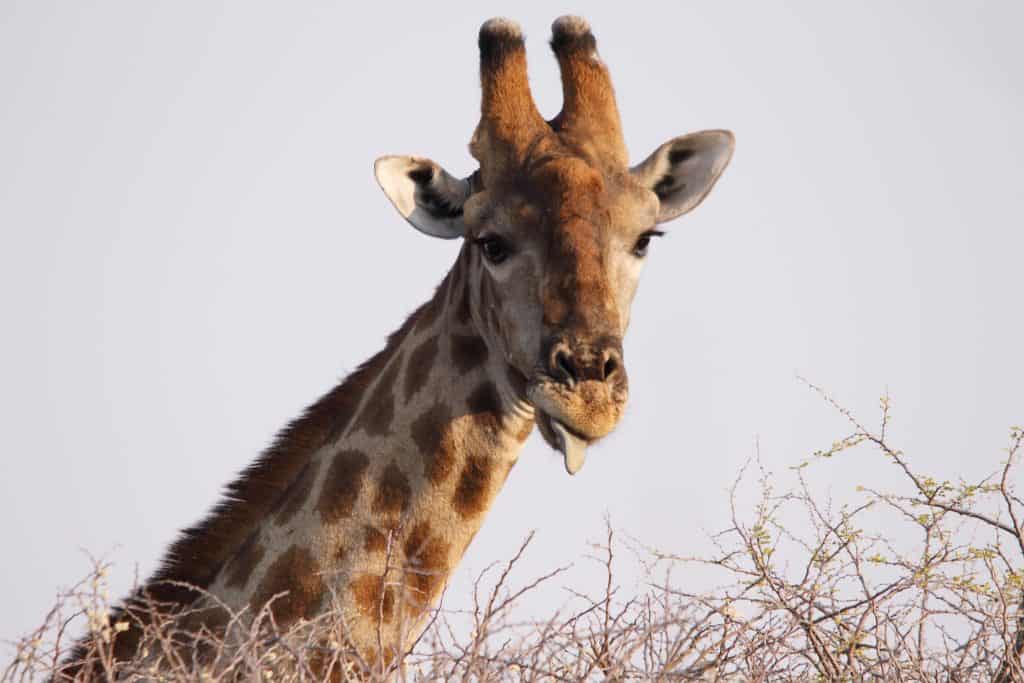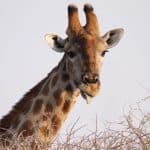Yes Giraffes can make sounds. But it was long thought that giraffes weren’t capable of making any noises because of their long necks – but they do make many different sounds and vocalisations.

How Can Giraffes Make Sounds?
All mammalian bodies have the same tools inside their throats to make noises with – they just often use them in different ways.
However, biologists in the early days postulated that because their necks were so long – that the speed of air needed to travel through their vocal chords to make noises wouldn’t be fast enough. Ergo – giraffes can’t make a sound.
But of course, biologists in those days probably hadn’t ever seen a giraffe – let alone observed them for hours in their natural habitat – so it was all theory. However – it stuck. It was therefore long-thought that giraffes made no sounds at all.
Fast forward to the actual science – and of course they can make noises – how else can they communicate?
With a standard set of mammalian tools in the throat: trachea and larynx (windpipe and voice box) and a giant set of lungs – they can make a variety of noises varying in pitch, volume and range (many of which we can’t easily hear). They use these vocalisations to talk to each other and make sure everyone knows where – and who – everyone is.
What Sounds Do Giraffes Make?
Depending on what they want to say, who they are, and how old they are – giraffes can make around 12 distinct sounds. These all link to specific behaviour and some of these sounds overlap. The most sounds used so far are between mother and offspring – as this bond is very intimate.
The Grunt:
This type of sound is mainly used by males and is a warning sound – usually signalling danger of some sort. It is mainly used when males are fighting as a warning to the competing male – to convey a serious threat.
The Snort:
This sound is commonly heard in all adult giraffes and is to signal a warning from an external threat – such as a predator. It is often accompanied by foot-stomping and usually precedes the herd running away.
The Hiss:
This is used in different situations for each sex – but conveys a similar message either way. With males it can be used as a frustration sound when fighting another male; and with females, they use it to tell off their offspring when they are annoying or naughty.
The Loud Cough:
Males use this sound when wooing the ladies. It isn’t clear what the exact purpose of this sound is, but it is nearly always heard in the lead-up to mating.
Various Whistles:
When mums want to call their offspring back to their side – such as when moving on or in times of danger – they will whistle to get their attention. If they are farther away – the females will bellow – a sound that can travel up to a mile.
Cute Bleats & Mews:
These two sounds are common in young giraffes. Depending on what they want they make a variety of sounds to get a similar reaction to a baby crying or a toddler saying ‘mom’ a million different ways. It can express anything from fear, alarm, or just because they want something!
Night-time Humming:
There are tales of giraffes humming at night (like a low cow moo) as a way of comforting each other. Keepers had never heard this sound before it was recorded – as it is just at the bottom of human hearing range. It has been suggested though that it is just a type of snoring instead of mumbling – so more still to be learned!

Do Giraffes Use Their Horns to Make Sounds?
Giraffes have horns, but contrary to popular belief, they don’t use them to make sounds. The truth is, their horns, called ossicones, serve other purposes. Ossicones are more like bony structures, used by giraffes for fighting, establishing dominance, and attracting mates. So, while it’s intriguing to ponder why giraffes have horns, sound production is not on that list.
Can Giraffes Sneeze?
Because of the way a mammal nose works – any obstruction will cause a reaction. Sometimes even the tiniest particle inhaled the wrong way will trigger a natural reflex to blow it out – fast. The power of a sneeze can be over 160km/h (100mph) in humans alone – imagine what a giraffe can do!
These sneezes are lifesavers as they prevent particles from accidentally being sucked into the lungs and causing infections (aspiration) or getting stuck in the windpipe and causing an obstruction.
Because mammal throats do two things: breathe or swallow – it has to choose which to do at any moment. So if you are breathing – the flap to your lungs stays open and these particles could get sucked in by accident.
To avoid this happening – and to save a life – the sneeze occurs. Thank goodness.









